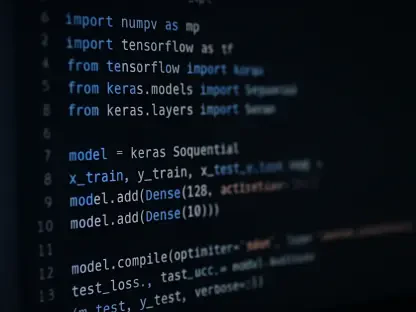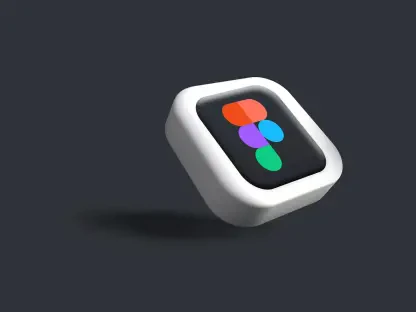Imagine stepping into a world where your living room transforms into a personal theater, your workspace expands into a boundless 3D environment, and your interactions with technology feel as natural as a conversation. This is the promise of spatial computing, and Apple is pushing the boundaries with its latest software update for the Vision Pro headset. As mixed reality continues to redefine how technology integrates into daily life, this review explores whether VisionOS 3.0 truly delivers on the hype, offering a comprehensive look at its features, performance, and potential to shape the industry.
Key Features Unpacked
Apple Intelligence at the Core
VisionOS 3.0 introduces a groundbreaking integration of Apple Intelligence, a move that elevates the user experience through advanced AI and machine learning capabilities. This system enhances contextual awareness, allowing the headset to anticipate user needs based on environmental cues and past interactions. Siri’s voice interactions become more conversational, facilitating hands-free control with a level of nuance previously unseen in mixed reality platforms.
Beyond voice, the update refines hand and eye tracking, making navigation in virtual spaces feel instinctive. Users can select objects or trigger actions with a mere glance or subtle gesture, streamlining complex tasks. This seamless blend of AI-driven features not only boosts usability but also strengthens connectivity with other Apple devices, ensuring a cohesive ecosystem experience.
The significance of these advancements lies in their ability to make technology disappear into the background. By prioritizing natural interaction, Apple Intelligence in VisionOS 3.0 aims to redefine how users engage with digital content, setting a new standard for immersion in spatial computing.
User Interface and Experience Overhaul
The user interface in VisionOS 3.0 has been reimagined to prioritize immersion and functionality. A standout addition is the Spatial Gallery app, which transforms media consumption by allowing users to interact with photos, videos, and 3D objects in a fully immersive environment. This feature creates a virtual museum-like experience, bringing personal content to life in unprecedented ways.
Further enhancing engagement, the update introduces support for motion controllers, catering to gamers and precision tasks with improved accuracy. Gesture controls and eye tracking have also been fine-tuned, enabling smoother selections and interactions, while advanced multitasking features like 3D workspace arrangements allow users to manage multiple apps effortlessly. These upgrades collectively enhance productivity, turning the Vision Pro into a powerful tool for professionals and creatives.
Ultimately, these UI and UX improvements focus on reducing friction in user interactions. By making the interface more intuitive, VisionOS 3.0 ensures that users spend less time learning the system and more time leveraging its capabilities, a critical factor in driving adoption across diverse demographics.
Performance and Stability Boosts
Under the hood, VisionOS 3.0 brings significant performance enhancements that address core user concerns. Kernel-level optimizations reduce latency in spatial tracking and rendering, ensuring that virtual elements respond in real time to user movements. This improvement is crucial for maintaining immersion, especially in dynamic applications like gaming or simulations.
Additionally, better memory management and thread handling support multitasking without compromising speed or draining battery life. These upgrades make the system more reliable, even when running resource-intensive apps, providing a stable foundation for developers to build upon.
Battery life improvements also play a pivotal role, extending usage time for prolonged sessions. This focus on stability and responsiveness underscores Apple’s commitment to delivering a polished experience, ensuring that technical hiccups don’t disrupt the magic of mixed reality.
Strategic Direction and Industry Context
Apple’s emphasis on software with VisionOS 3.0 reflects a deliberate strategy to refine the user experience before rolling out new hardware in the coming years. By focusing on updates rather than immediate device refreshes, the company aims to maximize the potential of existing Vision Pro units, a cautious approach that mitigates risks in the still-emerging spatial computing market.
This software-first mindset aligns with broader industry trends, where user experience and ecosystem development often take precedence over rapid hardware iterations. Apple’s decision to delay next-gen hardware until at least a couple of years from now allows for deeper refinement of VisionOS, ensuring it meets the high expectations set by the brand.
Moreover, this update positions Apple as a leader in prioritizing seamless integration and privacy over sheer processing power, distinguishing it from competitors like Meta. VisionOS 3.0’s enhancements signal a shift toward making spatial computing more accessible and practical, a move that could accelerate mainstream adoption in the long term.
Practical Applications Across Sectors
VisionOS 3.0 extends its utility far beyond novelty, offering tangible benefits across various fields. For creative professionals, the update transforms productivity with 3D workspaces that enable complex design and visualization tasks directly within a virtual environment, streamlining workflows in architecture, film, and graphic arts.
In gaming, the addition of motion controller support and reduced latency creates a more immersive and responsive experience, appealing to enthusiasts seeking cutting-edge entertainment. Education also stands to gain, as immersive simulations and interactive learning environments become more feasible, providing students with hands-on experiences in subjects like science and history.
A particularly compelling use case lies in home entertainment, where VisionOS 3.0 elevates spatial video quality and introduces personalized viewing environments. Integration with high-end TVs and surround sound systems positions the Vision Pro as a central hub for home theaters, potentially redefining how families enjoy movies and shows.
Challenges on the Horizon
Despite its promise, VisionOS 3.0 faces several hurdles that could temper its impact. Performance optimization on first-generation Vision Pro devices remains a concern, as some advanced features may not run as smoothly without updated hardware. This raises questions about the update’s accessibility to all users.
Market adoption in the nascent field of spatial computing also presents a challenge, as the technology still struggles to find a broad audience beyond early adopters. Apple’s closed ecosystem design, while ensuring consistency, may frustrate users seeking greater customization or third-party hardware compatibility.
Lastly, uncertainties around the full scope of features persist, as some rumored functionalities may not make the final cut. Ongoing beta testing and developer feedback are critical to addressing these issues, but the path to a flawless rollout remains complex, requiring careful balancing of innovation and stability.
Looking Ahead in Spatial Computing
VisionOS 3.0 serves as a foundation for future advancements, hinting at even deeper AI integration and expanded developer tools in subsequent updates. The potential for more sophisticated shared experiences, where multiple users interact in the same virtual space, could unlock new possibilities for collaboration and social connection.
Industries ranging from entertainment to professional workflows stand to be transformed as spatial computing matures. Apple’s focus on refining software suggests a long-term vision of making the Vision Pro a staple in both personal and enterprise settings, potentially reshaping how tasks are performed.
Competitively, Apple’s emphasis on quality and integration keeps it ahead of rivals, but the landscape remains dynamic. As other players innovate, the evolution of VisionOS will need to maintain its edge, ensuring that spatial computing becomes not just a trend, but a fundamental part of technological progress.
Final Thoughts
Reflecting on the comprehensive evaluation, VisionOS 3.0 proves to be a transformative step for Apple’s Vision Pro, delivering impressive strides in AI integration, user experience, and practical applications. Its performance enhancements and strategic focus underscore a commitment to excellence, even as challenges like hardware limitations and market adoption loom.
Moving forward, stakeholders should monitor how Apple addresses optimization for older devices through targeted patches or tiered feature sets. Developers, in particular, stand to benefit from engaging with beta programs to shape future iterations, while consumers might consider how spatial computing fits into their daily routines.
As the industry evolves, exploring partnerships for content creation—especially in entertainment and education—could amplify VisionOS’s reach. Apple’s journey in spatial computing is far from over, and sustained innovation will be key to cementing its leadership in this exciting frontier.









